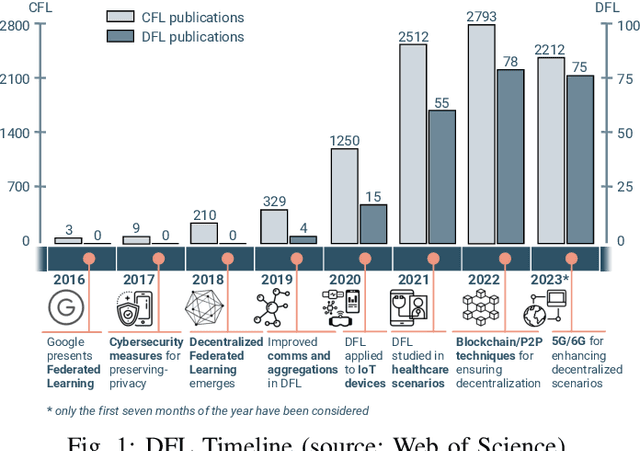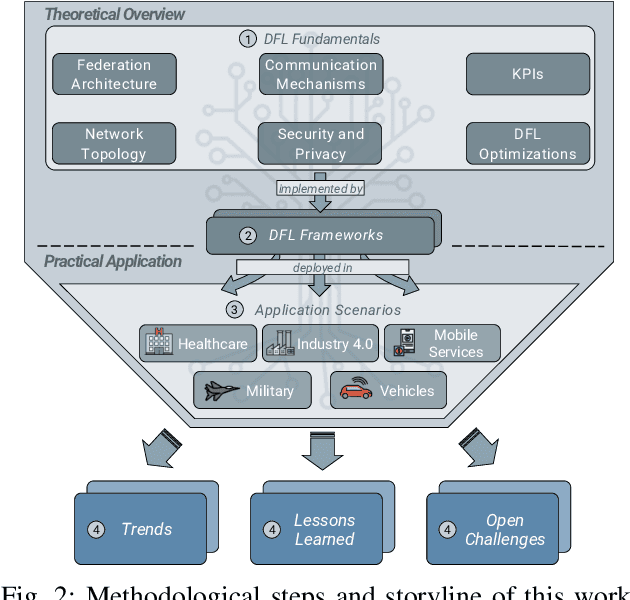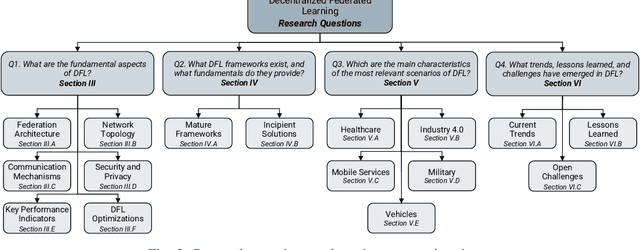Manuel Gil Pérez
Cyber Deception: State of the art, Trends and Open challenges
Sep 11, 2024Abstract:The growing interest in cybersecurity has significantly increased articles designing and implementing various Cyber Deception (CYDEC) mechanisms. This trend reflects the urgent need for new strategies to address cyber threats effectively. Since its emergence, CYDEC has established itself as an innovative defense against attackers, thanks to its proactive and reactive capabilities, finding applications in numerous real-life scenarios. Despite the considerable work devoted to CYDEC, the literature still presents significant gaps. In particular, there has not been (i) a comprehensive analysis of the main components characterizing CYDEC, (ii) a generic classification covering all types of solutions, nor (iii) a survey of the current state of the literature in various contexts. This article aims to fill these gaps through a detailed review of the main features that comprise CYDEC, developing a comprehensive classification taxonomy. In addition, the different frameworks used to generate CYDEC are reviewed, presenting a more comprehensive one. Existing solutions in the literature using CYDEC, both without Artificial Intelligence (AI) and with AI, are studied and compared. Finally, the most salient trends of the current state of the art are discussed, offering a list of pending challenges for future research.
Mitigating Communications Threats in Decentralized Federated Learning through Moving Target Defense
Jul 21, 2023Abstract:The rise of Decentralized Federated Learning (DFL) has enabled the training of machine learning models across federated participants, fostering decentralized model aggregation and reducing dependence on a server. However, this approach introduces unique communication security challenges that have yet to be thoroughly addressed in the literature. These challenges primarily originate from the decentralized nature of the aggregation process, the varied roles and responsibilities of the participants, and the absence of a central authority to oversee and mitigate threats. Addressing these challenges, this paper first delineates a comprehensive threat model, highlighting the potential risks of DFL communications. In response to these identified risks, this work introduces a security module designed for DFL platforms to counter communication-based attacks. The module combines security techniques such as symmetric and asymmetric encryption with Moving Target Defense (MTD) techniques, including random neighbor selection and IP/port switching. The security module is implemented in a DFL platform called Fedstellar, allowing the deployment and monitoring of the federation. A DFL scenario has been deployed, involving eight physical devices implementing three security configurations: (i) a baseline with no security, (ii) an encrypted configuration, and (iii) a configuration integrating both encryption and MTD techniques. The effectiveness of the security module is validated through experiments with the MNIST dataset and eclipse attacks. The results indicated an average F1 score of 95%, with moderate increases in CPU usage (up to 63.2% +-3.5%) and network traffic (230 MB +-15 MB) under the most secure configuration, mitigating the risks posed by eavesdropping or eclipse attacks.
Fedstellar: A Platform for Decentralized Federated Learning
Jun 16, 2023Abstract:In 2016, Google proposed Federated Learning (FL) as a novel paradigm to train Machine Learning (ML) models across the participants of a federation while preserving data privacy. Since its birth, Centralized FL (CFL) has been the most used approach, where a central entity aggregates participants' models to create a global one. However, CFL presents limitations such as communication bottlenecks, single point of failure, and reliance on a central server. Decentralized Federated Learning (DFL) addresses these issues by enabling decentralized model aggregation and minimizing dependency on a central entity. Despite these advances, current platforms training DFL models struggle with key issues such as managing heterogeneous federation network topologies. To overcome these challenges, this paper presents Fedstellar, a novel platform designed to train FL models in a decentralized, semi-decentralized, and centralized fashion across diverse federations of physical or virtualized devices. The Fedstellar implementation encompasses a web application with an interactive graphical interface, a controller for deploying federations of nodes using physical or virtual devices, and a core deployed on each device which provides the logic needed to train, aggregate, and communicate in the network. The effectiveness of the platform has been demonstrated in two scenarios: a physical deployment involving single-board devices such as Raspberry Pis for detecting cyberattacks, and a virtualized deployment comparing various FL approaches in a controlled environment using MNIST and CIFAR-10 datasets. In both scenarios, Fedstellar demonstrated consistent performance and adaptability, achieving F1 scores of 91%, 98%, and 91.2% using DFL for detecting cyberattacks and classifying MNIST and CIFAR-10, respectively, reducing training time by 32% compared to centralized approaches.
Decentralized Federated Learning: Fundamentals, State-of-the-art, Frameworks, Trends, and Challenges
Nov 15, 2022



Abstract:In the last decade, Federated Learning (FL) has gained relevance in training collaborative models without sharing sensitive data. Since its birth, Centralized FL (CFL) has been the most common approach in the literature, where a unique entity creates global models. However, using a centralized approach has the disadvantages of bottleneck at the server node, single point of failure, and trust needs. Decentralized Federated Learning (DFL) arose to solve these aspects by embracing the principles of data sharing minimization and decentralized model aggregation without relying on centralized architectures. However, despite the work done in DFL, the literature has not (i) studied the main fundamentals differentiating DFL and CFL; (ii) reviewed application scenarios and solutions using DFL; and (iii) analyzed DFL frameworks to create and evaluate new solutions. To this end, this article identifies and analyzes the main fundamentals of DFL in terms of federation architectures, topologies, communication mechanisms, security approaches, and key performance indicators. Additionally, the paper at hand explores existing mechanisms to optimize critical DFL fundamentals. Then, this work analyzes and compares the most used DFL application scenarios and solutions according to the fundamentals previously defined. After that, the most relevant features of the current DFL frameworks are reviewed and compared. Finally, the evolution of existing DFL solutions is analyzed to provide a list of trends, lessons learned, and open challenges.
 Add to Chrome
Add to Chrome Add to Firefox
Add to Firefox Add to Edge
Add to Edge